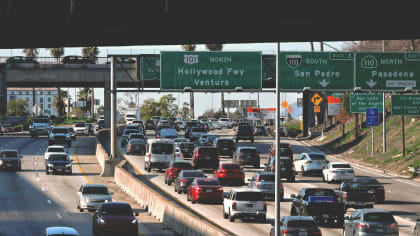THE LA CAR BLOG - JUNE 2004
This article is from our archives and has not been updated and integrated with our "new" site yet... Even so, it's still awesome - so keep reading!
Published on Mon, May 31, 2004
By: The LACar Editorial Staff
THE LA CAR BLOG
IT'S NOT EASY BEING
GREEN
Are Liberal Automotive Journalists An Endangered Species?
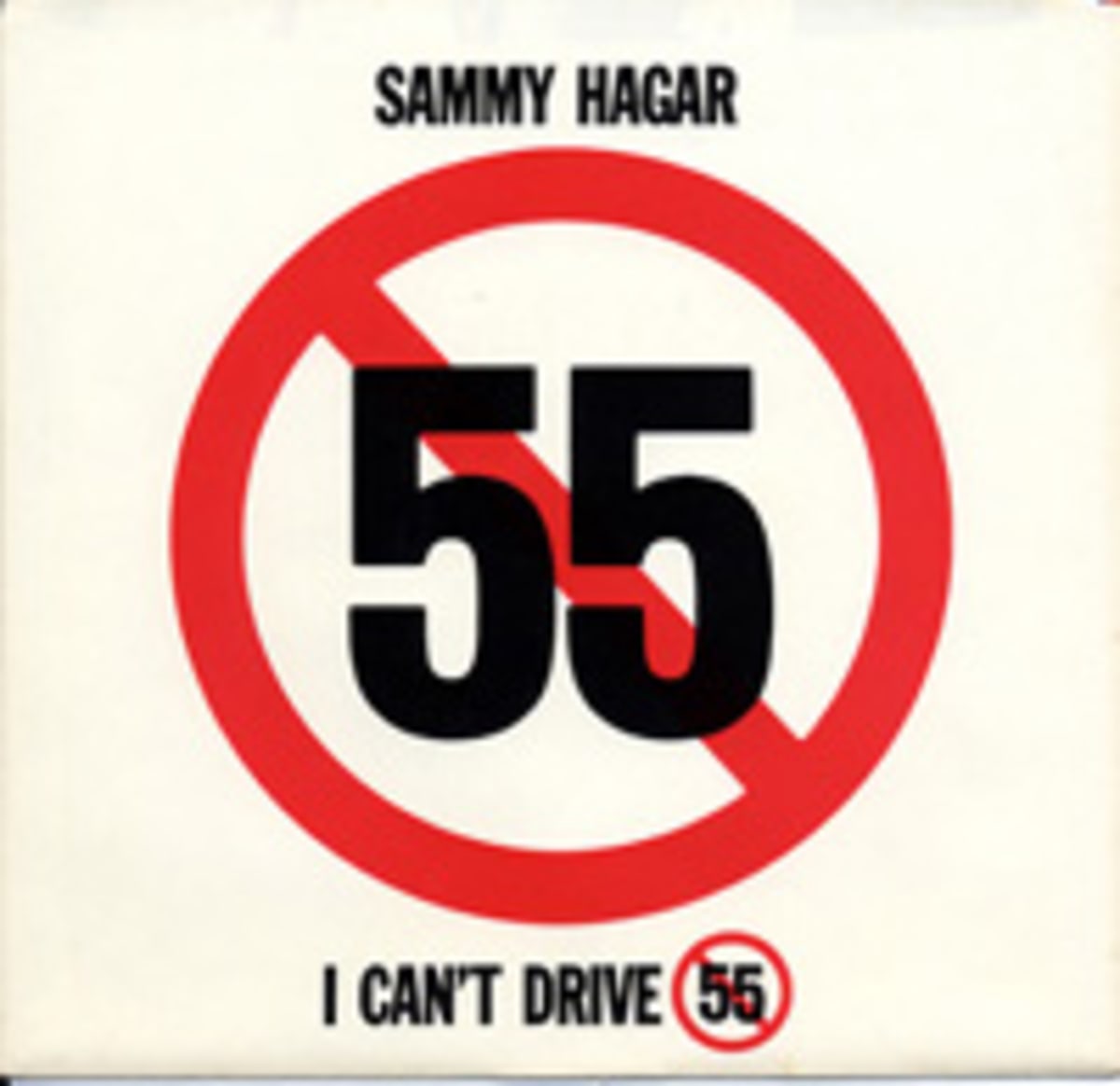
Most people think Kermit is singing about frogs. He's really commenting on the state of automotive journalism. Political party affiliations aside, when it comes to cars, automotive journalists gravitate toward libertaria - i.e., keep big brother off the backs of car makers and car drivers. Like all true automotive nuts, we want to drive anything we damn-well please and at any speed we deem safe. When it comes to the 55 miles per hour speed limit, we're singing Sammy Hagar's tune. Bring us the Autobahn, Mr. President. Corporate average fuel economy (CAFE) standards? Cafes are for coffee, not cars.
As car lovers, automotive journalists can't help but have this tendency to be drawn to the side that supports an unfettered path for our highway hobby. It's just the nature of the beast. The cars make us do it. Unfortunately, we do find ourselves looking a bit too much like lap dogs for car makers on the op-ed pages. Historically, we've been there defending manufacturers on emissions standards, gas mileage targets, SUVs, crash safety standards, and roll-over charges (see LA CAR's Chickens Come Home To Roost). You name it, we've been there. It gets to be a little too predictable at times.
On the other hand, the notion of a left-of-center automotive journalist is almost an oxymoron. The image I have of an environmentalist in the guise of a journalist is that he (or she) will just as well see automobiles supplanted by public transportation. The problem with this image is that the reality doesn't fit the stereotype. The number of left-of-center automotive journalists, I can count on one hand. If anything, however, they are as addicted to cars (and fast ones at that) as their right-leaning counterparts. They also bring some fresh thinking into the fold. The most shining example is Los Angeles Times staff writer Dan Neil, who was just bestowed the coveted Pulitzer Prize for critical writing. Just between you and me, it's unheard of for an automotive journalist to receive a Pulitzer. The handful of other critical thinkers that break the conventional mold of automotive journalism include Jamie Kitman (in particular, his pieces for CAR magazine) and John Retsek of KPFK's The Car Show. Whether they appreciate being labeled as liberal is another story. Clearly, however, they are not cut from the same cloth as their right-of-center colleagues.
Whoever said "variety is the spice of life" probably wasn't an automotive journalist. But what's good for the goose is good for the pages of our favorite car zines. Less predictability, more spice. Bring it on.
- RN
Comment on this blog: Letter to the Editor
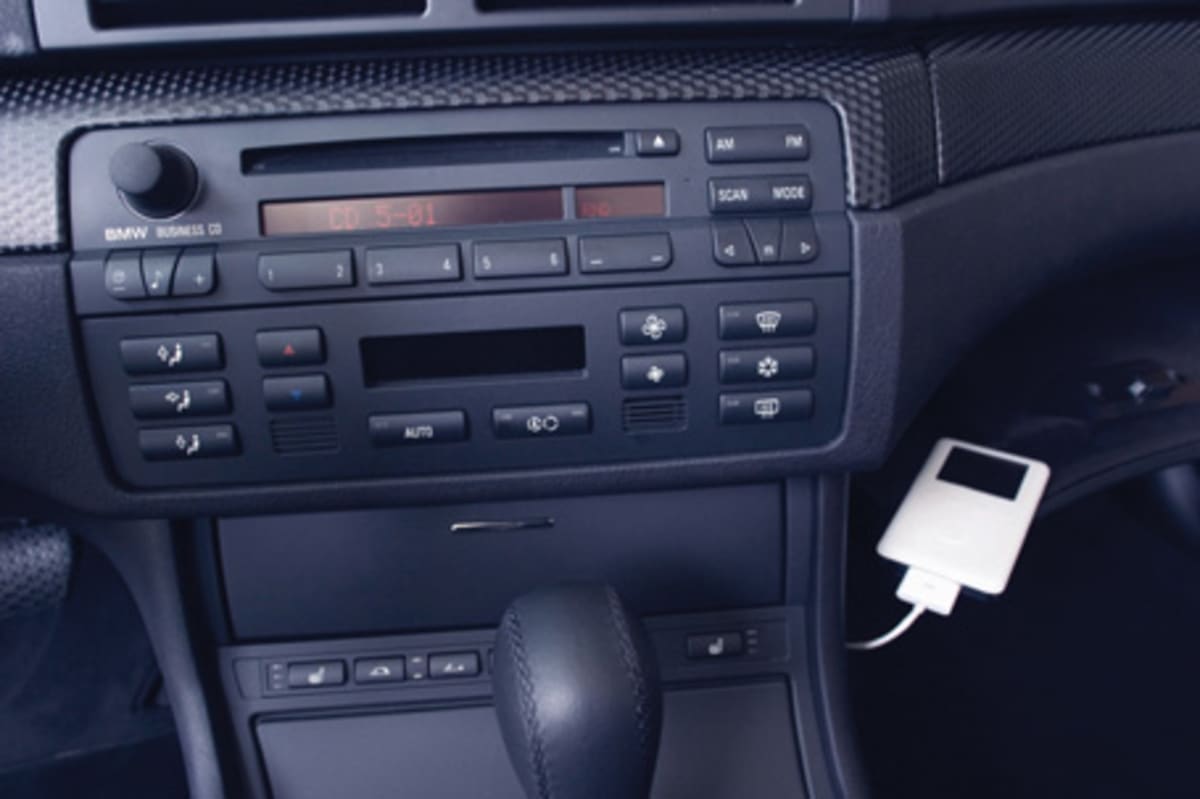
PLUG YOUR iPOD INTO YOUR
BMW OR MINI
If you own a digital music player, you've probably longed to plug it directly into your car or truck's sound system. This week, BMW became the first manufacturer to make that possible. BMW and Apple Computer announced an adapter that allows an Apple iPod to play tunes in a BMW 3 Series, Z4, X3, X5 and Mini Cooper. The BMW iPod Adapter will be available for the BMW models beginning July 12, at a manufacturer's suggested retail price of $149 plus installation. The MINI Adapter will be launched later in the summer. Installation can be performed only at dealers. The iPod is placed in the glovebox, where it rests out of sight, and the driver controls it through the vehicle's audio system and multifunction steering wheel. The iPod Adapter is not suitable if the vehicle is equipped with certain audio or other equipment, such as satellite radio or a navigation system. Further information is available at www.ipodyourbmw.com. BMW promises to make the iPod Adapter compatible in the rest of its model lineup, but there's no word on timing. The agreement between BMW and Apple is non-exclusive, so look for tie-ins between Apple and other manufacturers down the road.
- Chuck Dapoz
Comment on this blog: Letter to the Editor
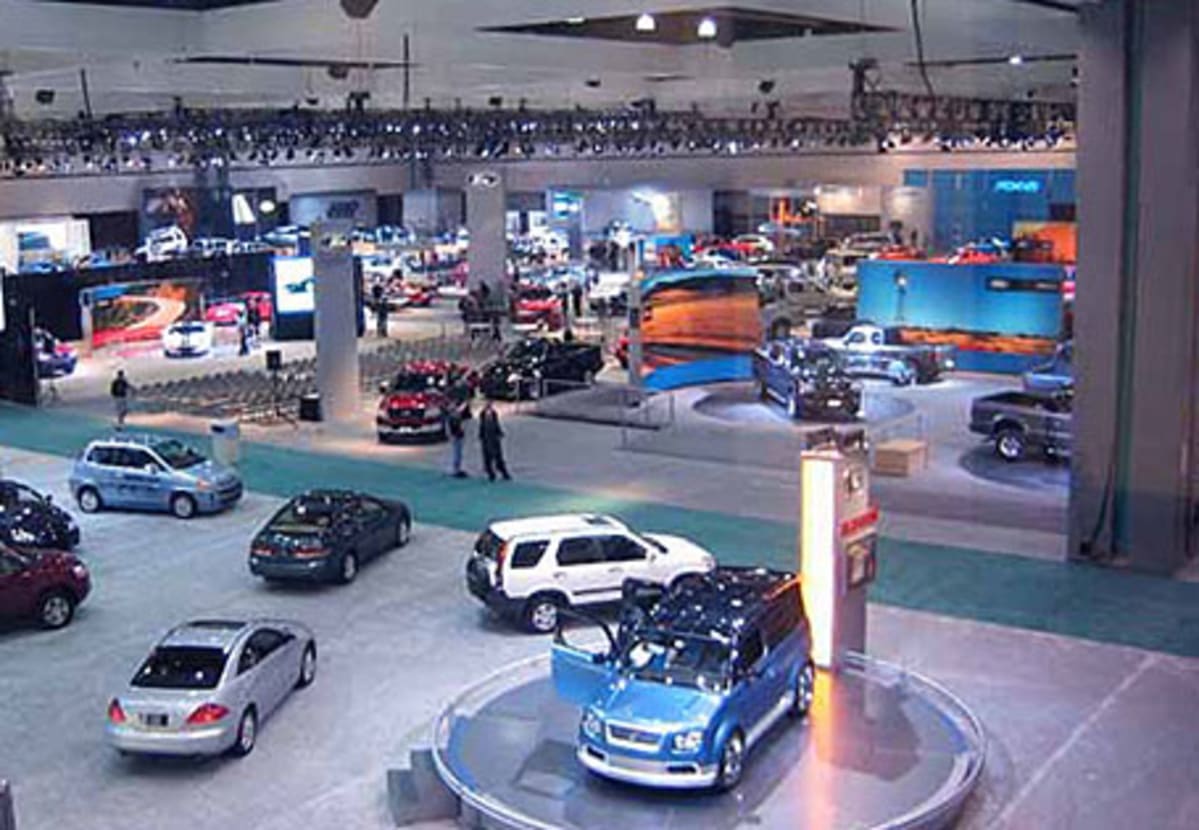
LA AUTO SHOW MOVES TO NOVEMBER
Los Angeles & Show Organizers Finally Get It
After countless years of being told by automotive journalists and manufacturers alike to move the date of the LA Auto Show, city officials and show organizers have finally done it. In 2006, the show will move to late November. Up until now, city officials were content to keep the show in conflict with the North American International Auto Show in Detroit. After all, LA's show continues to attract a million or more consumers. Unfortunately, it forces international journalists to choose between covering Detroit or covering Los Angeles. With so many more debuts in Detroit, journalists have been choosing Detroit. In turn, this caused car manufacturers to make the same choice, causing the downward spiral of the LA Auto Show in terms of media importance. At last count, Detroit had 40 world debuts, while Los Angeles had a debatable five. The bad news is that the change in schedule won't take place for another two years. The good news is that it's finally happening. Hopefully, it won't turn into a media ghost town by then.
- RN
Comment on this blog: Letter to the Editor
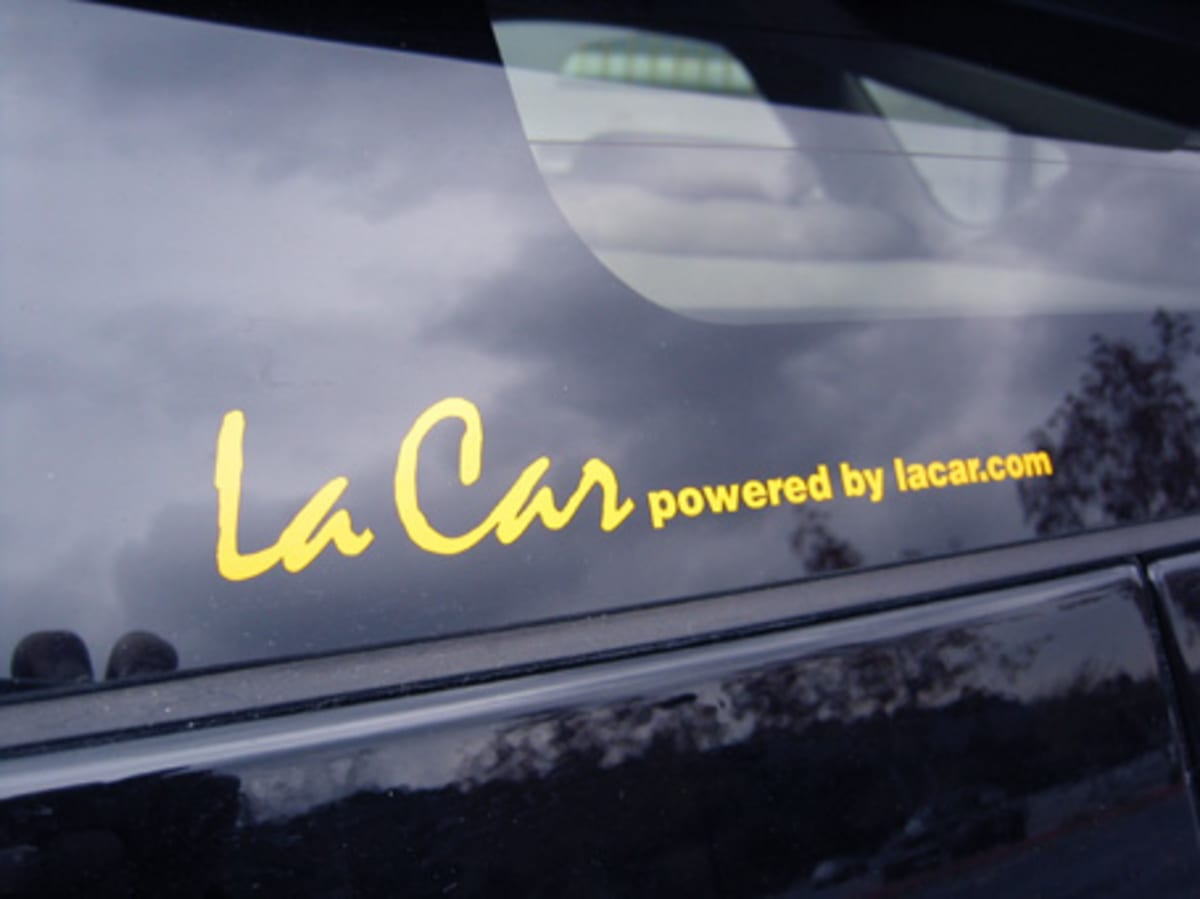
Decal mounted on the rear of the LA CAR
2004 Prius
HYBRID vs. DIESEL
Well, some of the members of the Prius groups aren't too happy with LA CAR's "45-State Alternative to the Toyota Prius" article (see below). A few think the article is biased in favor of Volkswagen's diesel. One Prius owner suggests that Volkswagen, the manufacturer, may be responsible for conducting a clandestine operation to spread negative press on the Prius.
In reality, both the Volkswagen Passat and Toyota Prius serve as company cars for LA CAR - and both are held in high regard here. However, the tension is indicative of some of the 'hybrid versus diesel' animosity that appears on some popular bulletin boards. It's a shame, because both technologies are to be applauded. Hybrids advance both the emissions and gas mileage state of the art. Diesels also advance the mileage envelope, and are becoming more emissions-friendly as the years go by. In terms of greenhouse gases, diesels are among the lowest emitters. The anticipated advances in diesel fuel standards will improve the medium that much more.
The real advance will come when hybrid diesel powerplants become popular. That will meld two great technologies together. 'Hybrid versus diesel' will give way to 'hybrid and diesel.' After all, there's plenty of room here for both. - RN
For LA CAR's review of the Prius, see The Future Is Now Comment on this blog: Letter to the Editor
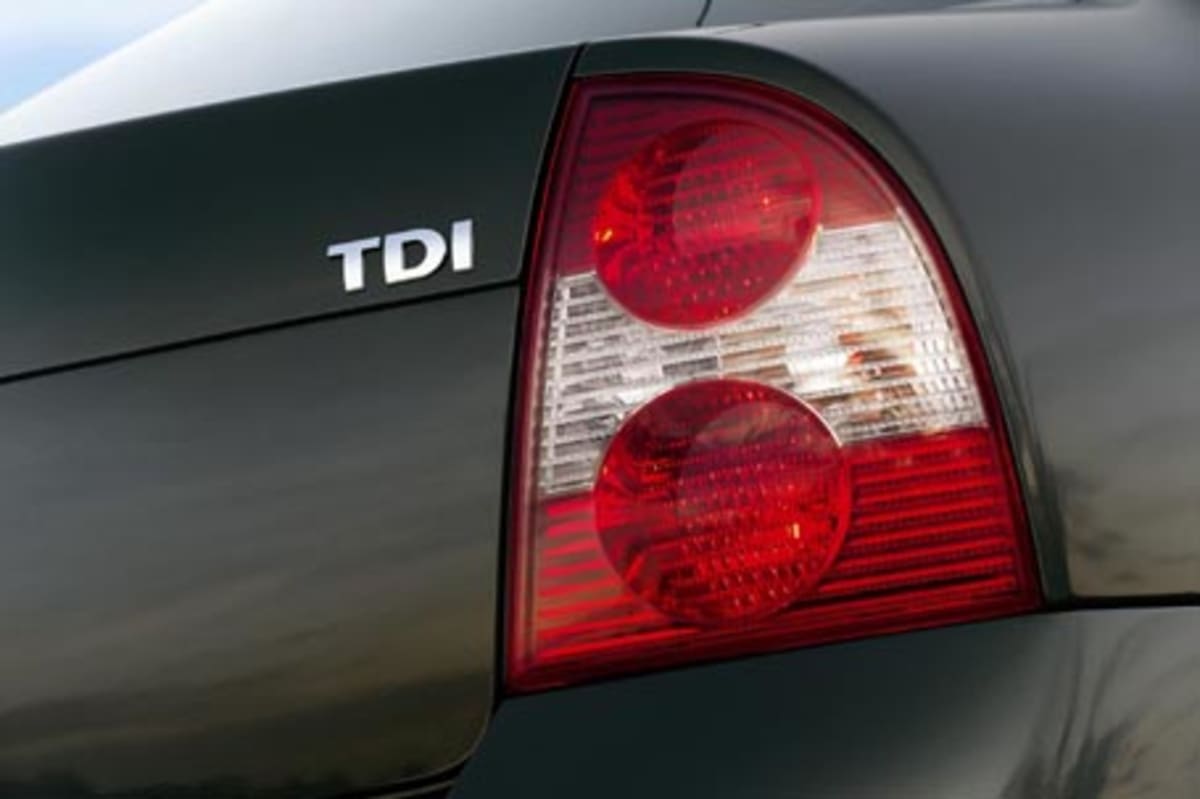
THE 45-STATE ALTERNATIVE TO THE TOYOTA PRIUS
After being named the Motor Trend Car of the Year, Automobile magazine's Design of the Year, the North American International Auto Show's North American Car of the Year, Top Gear's Family Sedan of the Year, making Car and Driver magazine's 10 Best list, and serving as the most popular mode of transportation to this year's Academy Award ceremonies, the 2004 Toyota Prius has made it to the top of the automotive most-wanted list. Despite the fact that Toyota has increased production of the 2004 Prius since its introduction, demand still far outstrips supply. The average wait for the car has now surpassed the six-month mark. The Wall Street Journal reports that Toyota's backlog on the car has reached 22,000. Choice spots on dealer waiting lists have evidently been selling on Ebay for $500 or more. For months, Toyota dealers have resisted the urge to sell the car over the manufacturer's suggested retail price. That resistance, however, has been severely tested recently, as some dealers are reportedly buying used 2004 Prius models for over MSRP and selling them on the lots for well-over the new-car sticker price.
No doubt, some of the appeal of the Prius is due to its gee-whiz technology: It's super-quiet operation during full-electric mode, the thermos that keeps coolant fluid hot for three days (allowing for near-instantaneous warming of the cabin on cold mornings), the locks that detect your presence as you approach the car (the optional SmartKey), the stability control that purports to detect when you're oversteering - and self-corrects the wheel angles via its electronic steering mechanism, the continuously variable transmission - the list goes on.
Most of the Prius appeal, however, comes right down to its outstanding gas mileage. The Environmental Protection Agency rates it at 51 miles per gallon on the highway and 60 mpg in the city (55 mpg combined). For most Prius owners, the real world mpg is closer to 44 mpg. This still represents a substantial savings at the gas pump.
For the prices that some dealers are now asking for the Prius, it's simply not worth it. For many, it's also not worth waiting six months or more for a car to arrive. For these people, there is an alternative - and it's not another hybrid vehicle (the Honda Civic Hybrid is hard to come by as well). The alternative: A Volkswagen Passat TDI.
The Passat TDI (turbocharged direct injection) is a diesel-engine vehicle not to be confused with the noisy, smelly, and dirty diesels of yesteryear. The Europeans in general and Volkswagen in particular have made great strides in diesel technology. The new Passat TDI benefits from VW's latest pumpe düse (pump injectors) design, and is a quantum leap forward from even the TDI design currently offered in the Golf, New Beetle, and Jetta. The 2.0 liter engine in the TDI cranks out a whopping 247 pounds-feet of torque. That's almost equal to the 5.0 liter V8 Mustang GTs of Vanilla Ice fame. However, in the Passat TDI, it's delivered at a much more instantaneous 1900 rpm - that's just a little over idle! This makes the TDI a better match to the five-speed Tiptronic automatic transmission than the standard 1.8T gas engine.
There's a reason why 40 percent of cars sold in Europe are diesels, and the Passat TDI goes 25-30 percent farther on a gallon of gas than its four-cylinder, gas-engine counterpart. At 12,000 miles per year and a gasoline price tag of $2.00 per gallon, the savings will amount to nearly $300 per year. Considering that the TDI sells for only $205 over its gas-engine counterpart, the Passat TDI is a true bargain.
For most family sedan buyers, Volkswagens aren't even on the radar screen. However, all you Toyota owners out there who live and die by the JD Power surveys, you're in for a shock. In terms of fit, finish, and quality of materials, the Passat is superior to most family sedans - including the Camry. The bank vault-like doors and trunk close with none of the tinny quality found in many $20-25,000 Japanese vehicles. That's because the current Passat is based on an Audi A4/A6 platform. And while many 2001-2003 Passats were plagued with faulty ignition coils from an outside vendor, VW has since rectified that problem. The Passat is otherwise enjoying better-than-average reliability.
The downside to the Passat TDI is that its only offered in 45 of the Union's 50 states. Although certain aspects of the TDI engine are very low in pollutants, five of the states (including California) bar its sale. The TDI doesn't deal with all pollutant nearly as well as the hybrids - and therein lies its other downside. If emission control is your utmost concern, you're probably better off waiting patiently for a Prius. On the other hand, if you're merely concerned with buying an excellent family sedan that gets really good gas mileage, is fun to drive, and you happen to live in the 45 states where the car is sold, take a serious look at the Passat TDI.
- RN
For LA CAR's review of the Passat, go to The Critics' Choice Comment on this blog: Letter to the Editor
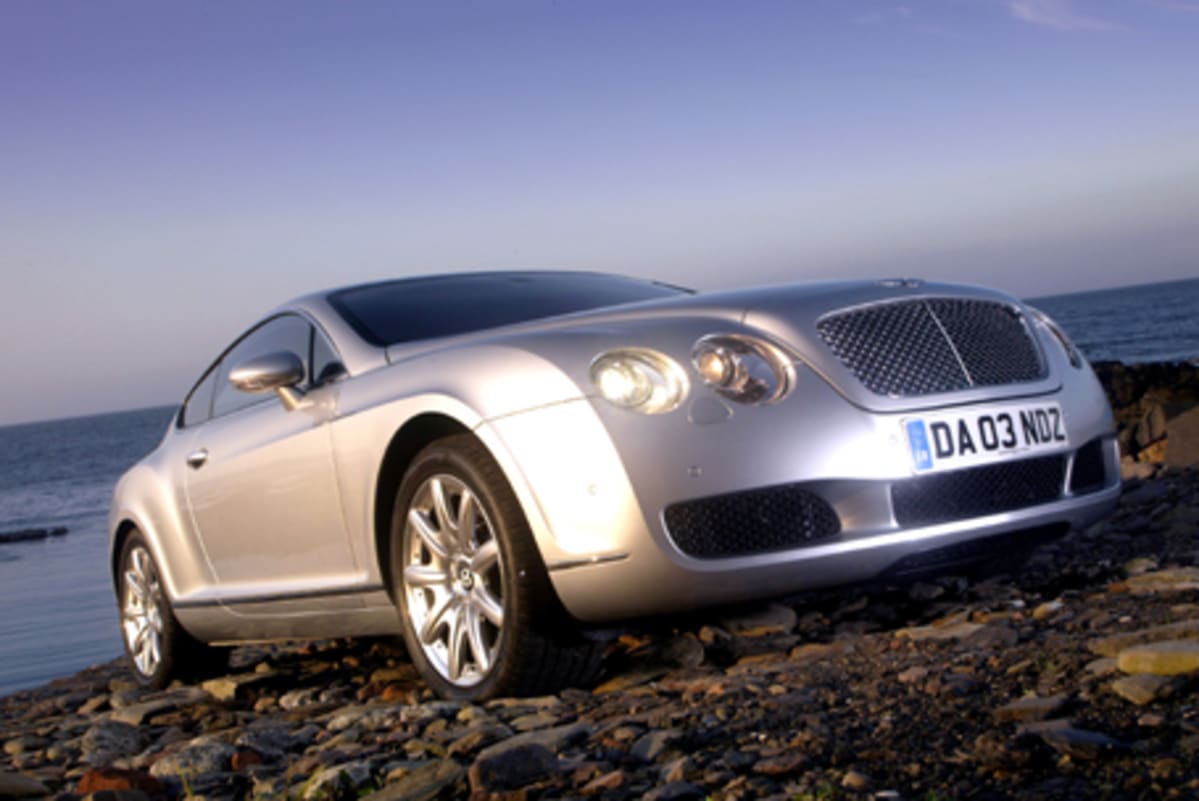
Bentley has sold out its $149,900 Continental GT for the year.
ULTRA-LUXURY SALES CONTINUE TO RISE, BUT HOW HIGH CAN THEY GO?
Ultra-luxury cars - those priced $100,000 up - are one of the fastest-growing segments in the auto industry. Last year, more than 16,000 were sold in the US, an increase of 43 percent over 2002. According to Automotive News, manufacturers are projecting sales of an additional 7,000 all-new ultra-luxury cars within two years - in other words, a further volume increase of 44 percent. Are there enough deep-pocket consumer to buy all of these six-figure cars? Automotive News gives arguments for and against. On the one hand, there seems to be enough wealthy buyers in the US, with nearly 1.5 million households reporting annual income of $250,000 or more (though we wonder how many of them would spend half of their salary on a car). On the other hand, the rich didn't get to be rich by spending foolishly or extravagantly. Many are perfectly happy driving, let's say, a modest BMW or Lexus. In addition, there's no telling when we may reach the point of a zero-sum game for ultra-luxuries, with a sales increase for one model leading to a decrease for another. The growth of the segment, and the success of any individual model, might ultimately depend on whether the vehicles offer performance, flair or other distinguishing characteristic. Jay Leno, who owns more than 100 collectable vehicles, feels there's room for the ultra-luxury market to grow - but not for me-too products. "If a vehicle does one thing specifically well, it will sell," says Leno. "But if it's just a luxury car, then it's seen as wasteful." Sales of vehicles costing more than $100,000 2003 Calendar Year Mercedes-Benz - 8,530 Porsche - 2,501 Ferrari - 1,350 BMW - 963 Maserati - 960 Aston Martin - 519 Lamborghini - 475 Bentley - 419 Maybach - 166 Rolls-Royce - 88 Total - 16,027 - Chuck Dapoz
Comment on this blog: Letter to the Editor
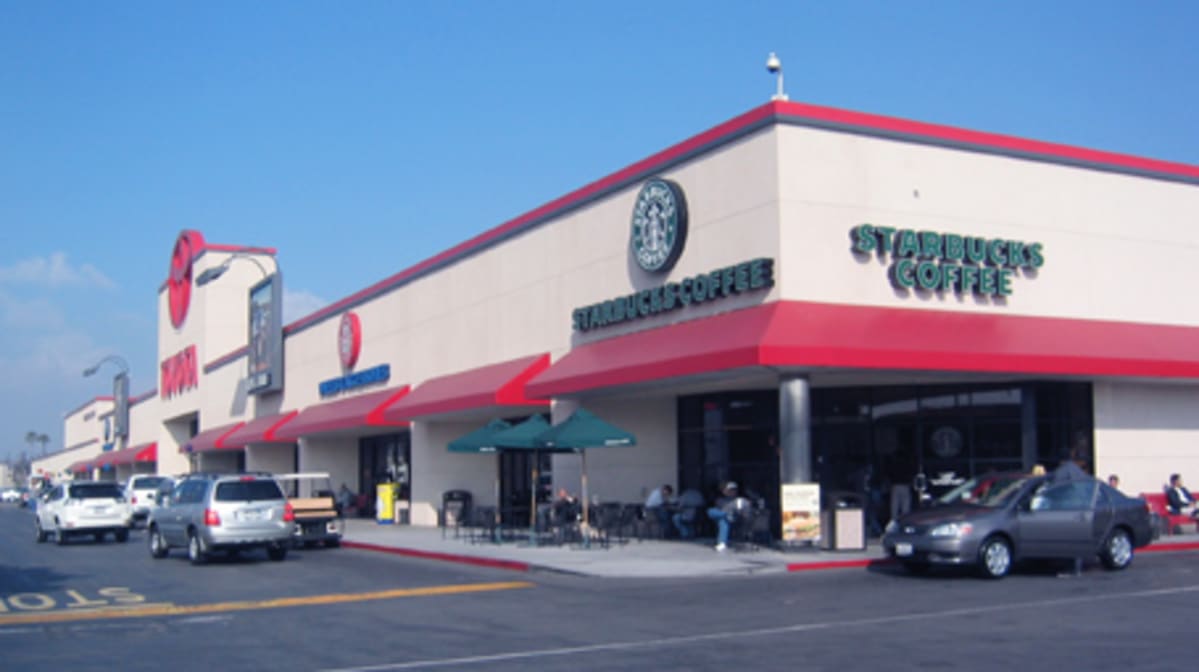
Longo Toyota has a Starbucks coffee house built into its dealership
THE STATE OF THE DEALERSHIP ART
Ask any new car owner, and they'll have a story about the dealer they take their car to. The stories can range from poetic praise to "my dealer's a crook" (the latter affectionately known as stealerships). Half the battle for a successful dealership is having a solid brand (solid, as in a brand with a solid reliability record). The other half is a combination of ingenuity, business know-how, and plain old hard work. In A Recipe For Success, LA CAR looks at what it took Longo Toyota in El Monte, California to become the number one volume dealer in the country. Some of what they do will make your jaw drop. On the other hand, there are dealers in other parts of the world that will go even further. In some distant lands, having a dealer pick your car up from your work site, and bringing it back after the service is completed is the norm. The same applies with new car acquisition. How about a salesperson that brings the car to your home to test drive? It just may happen one day here. - RN
Go to A Recipe For Success Comment on this blog: Letter to the Editor

M. Schumacher winning the San Marino Grand Prix (Shell-Ferrari photo)
RACES ARE WON BY THE SMARTEST DRIVERS
Formula One driver Mark Webber has an advantage over other drivers, says racing legend Jackie Stewart. The reason isn't horsepower. It's brainpower, according to a story in the International Herald Tribune. Stewart says Formula One drivers have, "Immense gifts of God-given talent, but there's not that many of them who have got a head that goes with it. The m has is probably his greatest asset." That's not to say Einstein could have run bumper to bumper with Mario Andretti, because there are different types of intelligence. On the track, "It is about an ability to read a situation, to deal with multiple stimuli, to be able to have a big-picture sense of the race, to be able to have a remarkable reaction time, a rapport with the car," says Vancouver-based sports psychologist Saul Miller. "It's like playing chess at 150 miles an hour." The IHT article cites Michael Schumacher, the current Formula One point champion, as another highly intelligent driver - one who wins races because he also performs prior to a race. For example, Schumacher worked closely with his Ferrari team to improve his car's electronic traction-control system. He'd push himself through corners as quickly as he could without the traction control engaged, knowing his skills were superior to the electronics. This set benchmarks for the suspension-turning specialists, who then worked to match Schumacher's performance. Eventually, the electronics performed as well as Schumacher - and then outperformed him, leading to the best possible driver-car performance, not to mention an incredible string of victories. Keep an eye on Webber during today's Canadian Grand Prix, in Montreal, and next week's U.S. Grand Prix, in Indianapolis. Schumacher won both races last year. But if Stewart is right, watch for Jaguar's Mark Webber to move up from his current 13th-place Formula One ranking. Maybe smart guys do finish first. - Chuck Dapoz
Comment on this blog: Letter to the Editor

VW, coincidentally, introduced its SUV Touareg at the Paris Auto Show
PARIS IS GETTING READY TO BAN SUVs
In LA CAR's most-recent Le Mondial de l'Automobile (Paris Auto Show) report, we remarked on the conspicuous absence of sport utility vehicles in the City of Lights. Now, it appears that the city council in Paris is prepared to make this a matter of law. According to Reuters, bulky four-by-fours could be banned from clogging up the chic streets of Paris after a top official in the capital's government described them as a polluting "caricature of a car" unsuited to city life. An anti-sports utility vehicle resolution passed by the city council could lead to a ban on the popular vehicles in about 18 months, if it is included in an overall project to improve traffic flow in the city, Deputy Mayor Denis Baupin said Wednesday. "You have to wonder why people want to drive around in SUVs," Baupin, a Greens party member, said on Europe 1 radio. "We have no interest in having SUVs in the city. They're dangerous to others and take up too much space."
The city council voted Tuesday to urge Mayor Bertrand Delanoe to consider banning SUVs, which are starting to become more popular and now make up about five percent of the French car market - just below the western Europe average. Baupin said Paris could not legally ban SUVs outright. "Our idea is to limit the circulation of the most polluting vehicles," according to Reuters. "That means SUVs and lots of other vehicles that don't meet European pollution standards." Baupin, who often cycles around Paris to promote more environmentally friendly transport, called SUVs a caricature of a car and said they were not adapted for use in a city. "It's made for a family on vacation ... and usually they only have one person in them," he said. "Let's be logical and only allow into the city cars that are adapted to it." - RN
Comment on this blog: Letter to the Editor

ANOTHER BOXCAR ONBOARD
The Nissan Cube is coming to America. Nissan is bringing the next generation of its aptly named Cube to the US, according to Automotive News. Although Americans may find the Cube small and its design quirky, the success of the similarly styled Honda Element and Scion xB no doubt contributed to Nissan's decision. Two versions of the Cube are sold in Japan: the five-passenger Cube, with two rows of seats, and the seven-passenger Cube3 ("Cube Cubic"), with three rows of seats. Both are powered by a 1.4-liter four-cylinder engine producing 97 horsepower and driving a continuously variable transmission (CVT). There's no word on how the new Cube will differ from today's model, but Automotive News cites an unnamed Nissan source as saying only the larger version is coming to North America. That likely means a more-powerful powerplant - and potentially a larger platform. Look for the US launch to take place in about three years. - Chuck Dapoz
Comment on this blog: Letter to the Editor
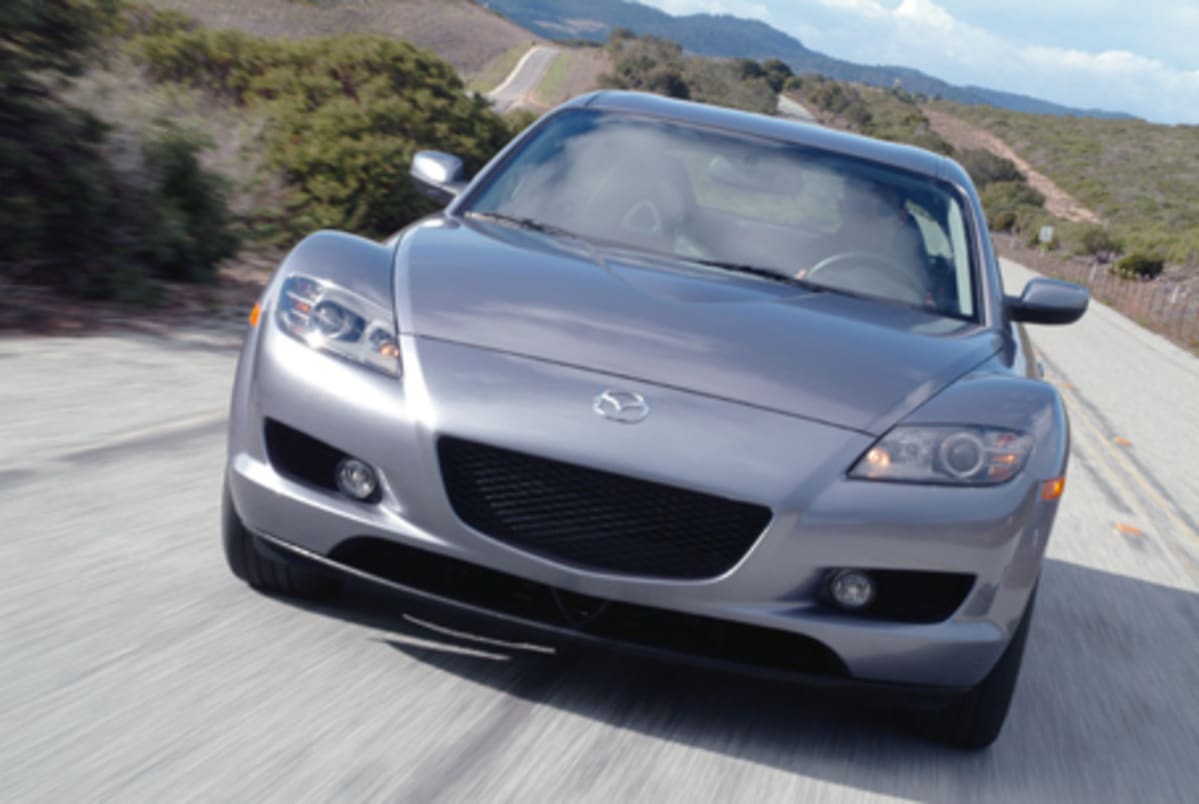
ROLLOVER, BEETHOVEN
RX-8 Tops The NHTSA's Rollover Tests In case you've been unsuccessful convincing the family that the sporty Mazda RX-8 will make a good family car, here's one you can try: The RX-8 just received the government's top rating of five stars for rollover ("hey honey, this car is so safe").
The U.S. Department of Transportation's National Highway Traffic Safety Administration (NHTSA) today released crash test results for the last 2004 vehicles and some early 2005 vehicles. The agency also released additional rollover ratings for 2004 vehicles. The 2004 Toyota Solara Coupe and the 2005 Chevrolet Equinox 4x4 are the only vehicles in the latest batch to earn the top rating of five stars for frontal and side impact crash tests. NHTSA's consumer information program uses a one- to five-star ranking system that reflects a vehicle's ability to protect the driver and passenger in a crash. New model year 2004 ratings for rollover varied, with passenger cars generally scoring higher than SUVs. As mentioned, the Mazda RX-8 received the top passenger car rating of five stars for rollover. For the light truck category, the highest scoring vehicles included the Dodge Durango 4x4, the Ford F-150 , the Honda Pilot 4x4 and the Toyota Sienna, each receiving a 4-star rating for rollover. NHTSA also uses a five-star scale to rate a vehicle on its likelihood of rollover in a single vehicle crash. A fact sheet containing explanatory information and tables showing crash tests results for recently released model year 2004 and 2005 vehicles can be obtained by calling the NHTSA Auto Safety Hotline, 1-888-327-4236. Crash test information is available at NHTSA's web site: www.safercar.gov. The site also can be used to compare scores for older vehicles. A table showing the rollover and crash test results announced today is posted at www.nhtsa.dot.gov. - RN
Comment on this blog: Letter to the Editor
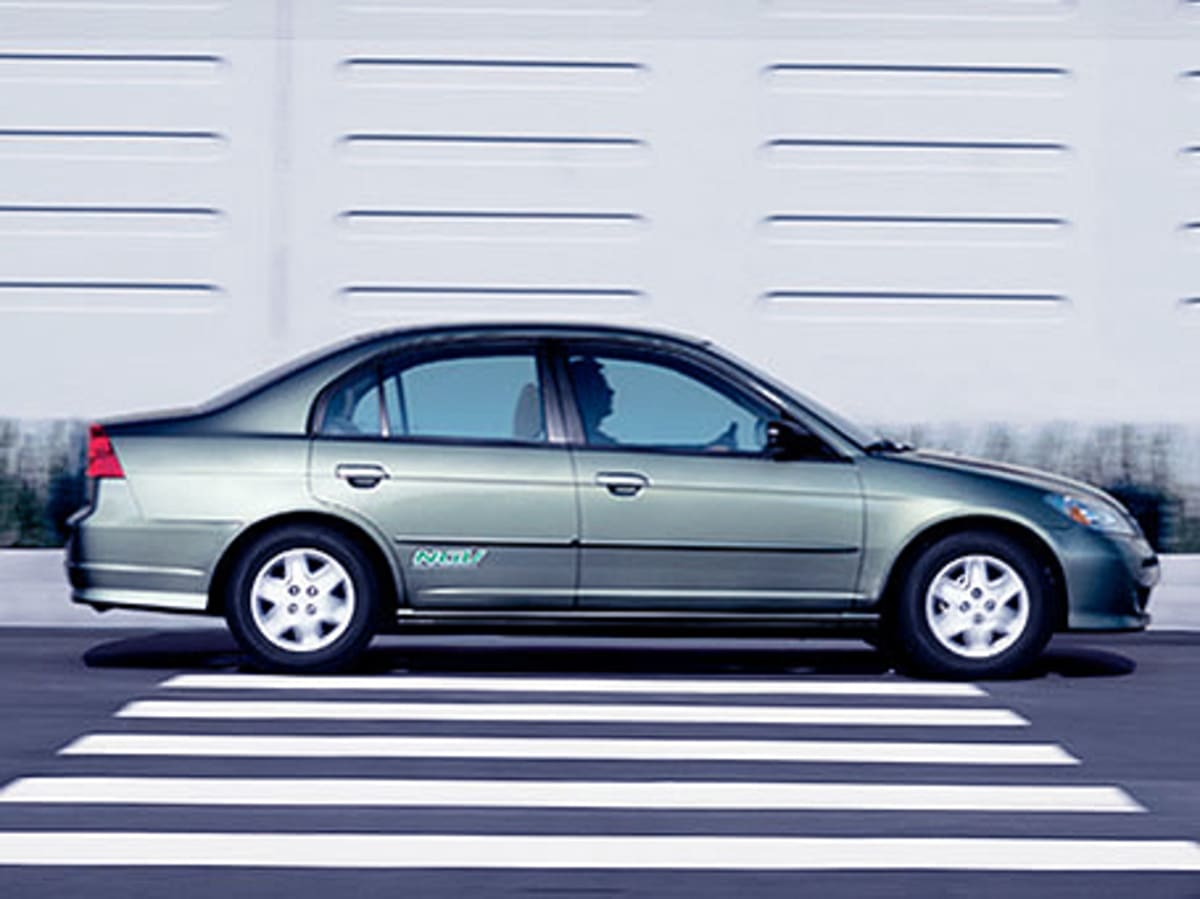
FREEWAY SHORTCUT NO. 15
Consider a Honda Civic GX Those of us who use the freeways and highways of California are well aware of the advantages of having a carpool. The HOV (high-occupancy vehicle) lanes are the most uncluttered during rush-hour traffic, and the envy of single-occupant vehicle drivers. Did you know, however, that certain cars and trucks can use the HOV lanes in California even if there's only one occupant in the vehicle? It's the result of a law enacted allowing cars and trucks that meet the Federal ILEV (Inherently Low-Emission Vehicle) and California SULEV (Super Ultra Low-Emission Vehicle) standards to use the HOV lanes, regardless of the number of occupants. In order to use the HOV lanes with only one occupant, eligible vehicle owners must first obtain an identification sticker from the California Department of Motor Vehicles. Once qualified, the owner receives a sticker, known as the AB71 single driver sticker (named after the 1999 State Assembly bill number authored by Jim Cunneen). To obtain the application online, visit the California Department of Motor Vehicle's website for Form REG-1000. So, can your low-emission Honda Civic Hybrid, Insight or Toyota Prius qualify for an AB71 sticker? Unfortunately, gasoline powered vehicles, including-electric hybrids, do not yet qualify for the single-occupant HOV sticker (there's a bill working its way through the legislature to change that). The cars that qualify are presently confined to pure electric vehicles and cars that operate on compressed natural gas (CNG). If you're looking for new car, there's only one game in town: The compressed natural gas-powered Honda Civic GX. The Civic GX runs pretty like like an ordinary Civic - except that the engine in the GX has been named the cleanest internal combustion chamber engine on the planet by the Environmental Protection Agency. The biggest drawback to owning a GX is that not all gas stations offer compressed natural gas. Compounding this problem is the mileage range of the GX, which is not as high as that of an ordinary Civic. For this reason, the Civic GX has been confined for years as an institutional fleet vehicle.
Honda has now made it easier for consumers to buy the GX (see the link below). Honda says it will also be easier to own and operate one, with the soon-to-be introduced Phill-a home-refueling appliance. Manufactured by FuelMaker Corporation, the device promises to allow refueling of the GX from the comfort of your home garage.
Honda Civic GX prices start at $20,760. For more information on the GX and on the Phill-a home-refueling device, check out the Civic GX site.
- RN
Comment on this blog: Letter to the Editor More freeway shortcuts at: LA CAR Blog - April 2004 LA CAR Blog - May 2004
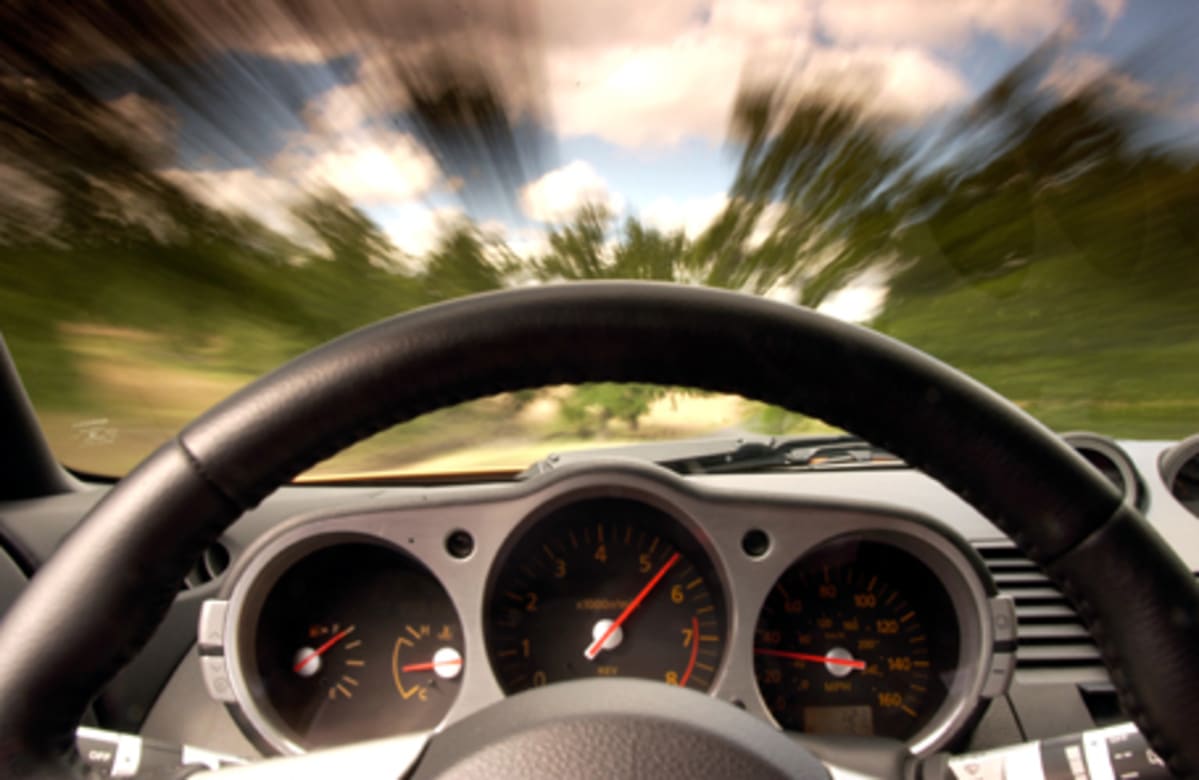
FAVORITE ROAD MUSIC - PART 4 June 3, 2004
The LA Times Gets Into The Act
In our April 8th-10th entries, we offered you the LA CAR Blog "Favorite Road Music." In today's Los Angeles Times, pop music critic Robert Hilburn offers his own 25 top road songs:
1. "Born to Run," Bruce Springsteen 2. "Highway 61 Revisited," Bob Dylan 3. "Me and Bobby McGee," Janis Joplin 4. "Thunder Road," Bruce Springsteen 5. "Ol' 55," Tom Waits 6. "Promised Land," Chuck Berry 7. "On the Road Again," Willie Nelson 8. "I've Been Everywhere," Johnny Cash 9. "White Line Fever," Merle Haggard 10. "Refuge of the Road," Joni Mitchell 11. "In My Car," Beach Boys 12. "Wheels," Flying Burrito Brothers 13. "Route 66," Rolling Stones 14. "Six Days on the Road," Dave Dudley 15. "America," Simon & Garfunkel 16. "Take It Easy," the Eagles 17. "Running on Empty," Jackson Browne 18. "Sweet Hitch-Hiker," Creedence Clearwater Revival 19. "Statesboro Blues," Allman Brothers Band 20. "L.A. Freeway," Jerry Jeff Walker 21. "Long May You Run," Neil Young 22. "Willin'," Little Feat 23. "Autobahn," Kraftwerk 24. "Rocket 88," Jackie Brenson 25. "Long White Cadillac," the Blasters There's also a companion piece by automotive journalist and Times staff writer Dan Neil, "The tires sing, the wind hums, the radio rocks," that's worth checking out.
- RN
Comment on this blog: Letter to the Editor
THE MORE YOU DRIVE, THE FATTER YOU GET? June 2, 2004
Study Shows Car Drives Pack Pounds

Spending more time behind the wheel - and less time on two feet - is evidently adding inches to waistlines and contributing to the nation's obesity epidemic, a new Georgia Tech Study concludes. The Associated Press reports that the survey of 10,500 metro Atlanta residents found that for every extra 30 minutes commuters drove each day, they had a three percent greater chance of being obese than their peers who drove less. The survey also found that people who lived within walking distance of shops - less than a half mile - were seven percent less likely to be obese than their counterparts who had to drive. The report quotes University of British Columbia associate professor Lawrence Frank as saying, "The more driving you do means you're going to weigh more - the more walking means you're going to weigh less." Frank oversaw the study when he worked at Georgia Tech. Some might say that this seems obvious, but AP reports that researchers were surprised to discover that how much time a person spent driving had a greater impact on whether a person was obese than other factors such as income, education, gender or ethnicity. About 91 percent of the people surveyed said they didn't walk to destinations. Many spent more than an hour each day in their cars. The study is expected to appear in the June issue of American Journal of Preventive Medicine. Researchers reportedly tracked participants' travel behavior and measured their height and weight from 2000 to 2002. The study focused on Atlanta, but Frank says the city is not alone.
Comment on this blog: Letter to the Editor
WHO'S SURVEY DO YOU WANT TO BELIEVE? June 1, 2004
Volkswagen Tops The Full-Line Total Quality Index Corporate List
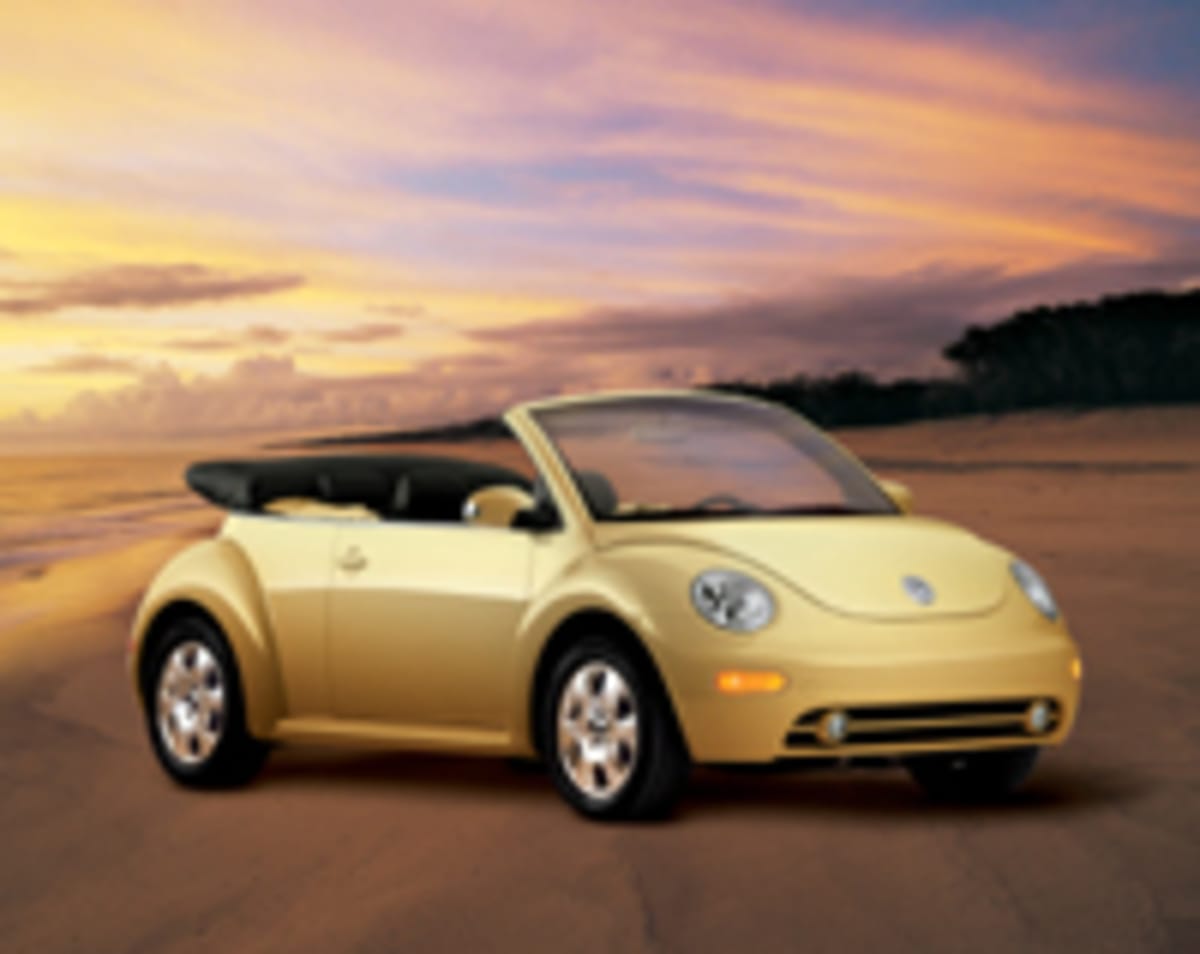
Just one month after the Westlake Village, California-based JD Power and Associates firm released the findings of its 2004 Initial Quality Study (QSI), the San Diego-based Strategic Vision research firm releases its 2004 Total Quality Indexâ„¢ (TQI).
Ordinarily, this doesn't warrant any attention. However, the Strategic Vision findings turn the JD Power results on its head. Whereas the Power study ranked German-based automotive corporations below average in the QSI report (in Porsche's case, last place), the Strategic Vision study ranks the German corporations at or near the top of its TQI report.
How can that be? According to the folks at Strategic Vision, their Total Quality Index is not merely a static report on the number of things that go wrong in the first 90 days of ownership. The company believes its TQI is a more accurate measure of owner satisfaction, in that it also assesses new buyers' responses to the complete ownership experience - including buying, owning and driving their new vehicles. The calculations also include the emotional response to that experience. With these variables factored in, Volkswagen-Audi tops all manufacturers with their combined score, while Mercedes topped all brands, tied with Infiniti.
Toyota Motor Sales, USA, Inc. (combining the Lexus and Toyota brands) tops JD Power's QSI ratings among automotive corporations. In the Strategic Vision TQI study, however, it ranks below average - in 20th place. According to Strategic Vision Vice-President Daniel Gorrell, the ubiquity of the Camry and perceived dullness of many Toyotas drags down the brand's score. Following Volkswagen as the top-scoring full-line corporation is Nissan, Honda and General Motors, which ranked above Toyota. "General Motors is the really big story for 2004" continues Gorrell. "Just to turn, let alone turn around such giant is a major victory." Data came from more than 39,290 buyers who bought 2004 models in October and November of 2003. "Their responses go into complex calculations that mirror the way people really respond to the vehicle ownership experience" says Dr. Darrel Edwards, Strategic Vision president and founder. "Accurate measures of customers' reactions have to include the emotions generated by the experience." "Completely understanding new car buyers, especially their emotions that drive decisions, will be increasingly important" says Edwards. "Too much capacity and fewer defects are making the playing field increasingly crowded with less to differentiate the players. Those who can deliver the most positive emotional experience and go beyond that to delight their customers are going to be the winners." So, what does this all mean for the consumer? It means that there is more to car ownership than frequency-of-repair. Craftsmanship, performance, and other factors can have a strong bearing on owner satisfaction - and can make up for an extra trip or two to the dealer service center. In reality, all cars are vastly more reliable than their counterparts of 20 years ago. This makes a simple study of frequency-of-repair a lot less meaningful in this day and age.
Ultimately, you've got to ask yourself: Is it better to be stuck with a dull but reliable car for 365 days a year, or to own a car you look forward to driving 365 days a year that might be stuck in the shop for a day or two?
- RN
Comment on this blog: Letter to the Editor
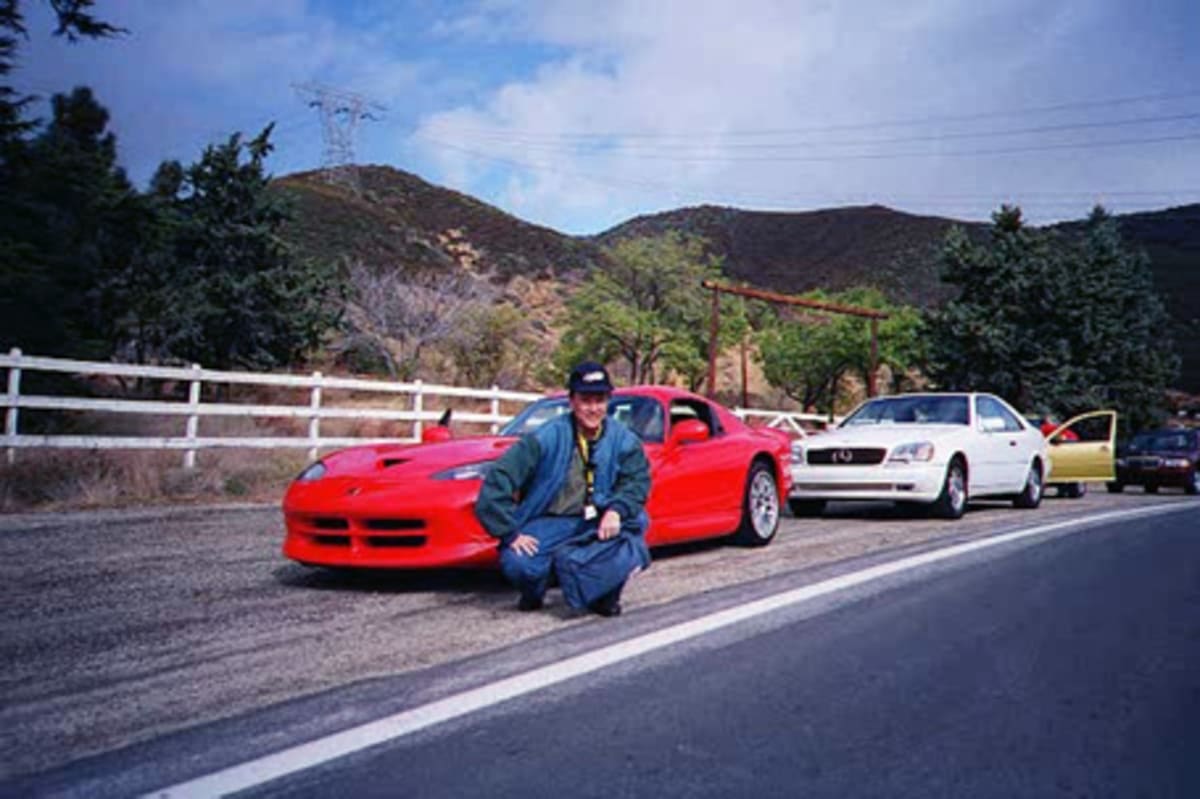
A
JOURNAL OF LOS ANGELES & ITS CAR CULTURE
So, go ahead and bookmark www.lacar.com. We'll be sure to always provide a link to the latest blog entry. In the meantime, welcome to the journal and journey into the cars and culture of Southern California.
- Roy Nakano
To go to the current blog, click the LA CAR Blog link on the homepage. Past LA CAR Blog entries: May 2004 April 2004

